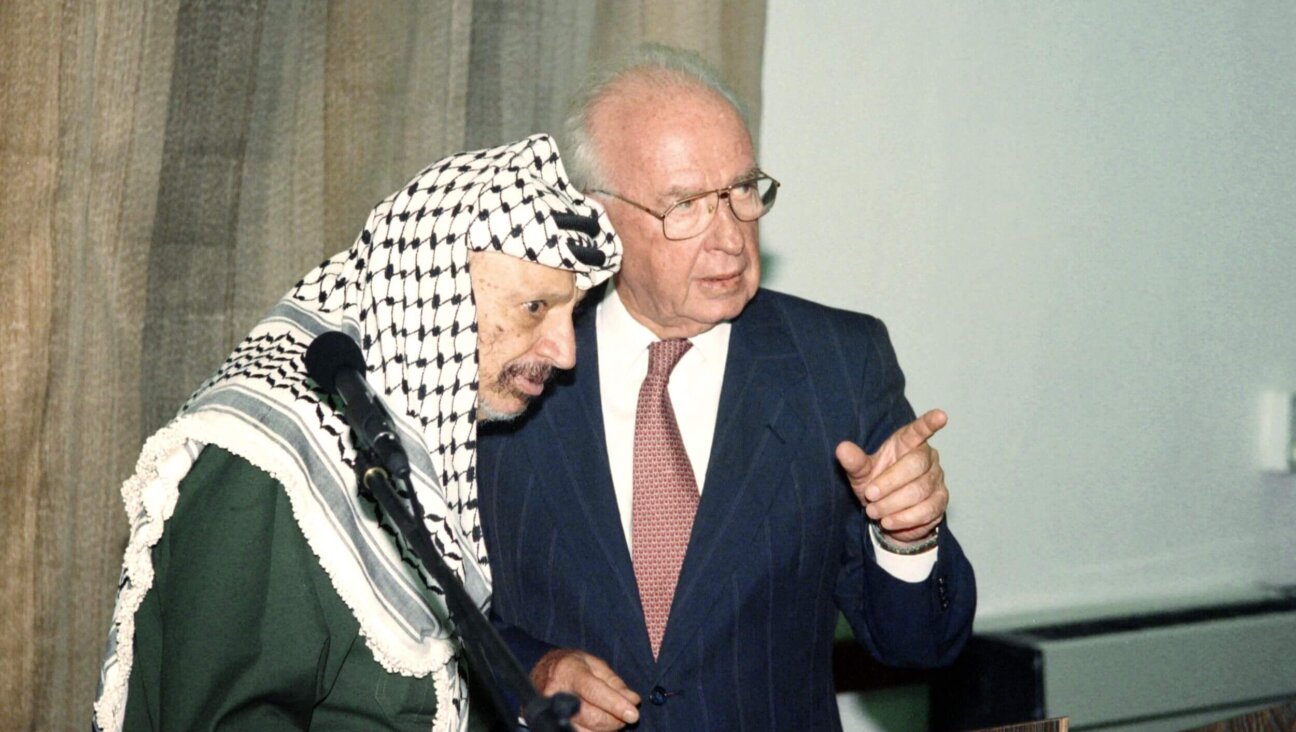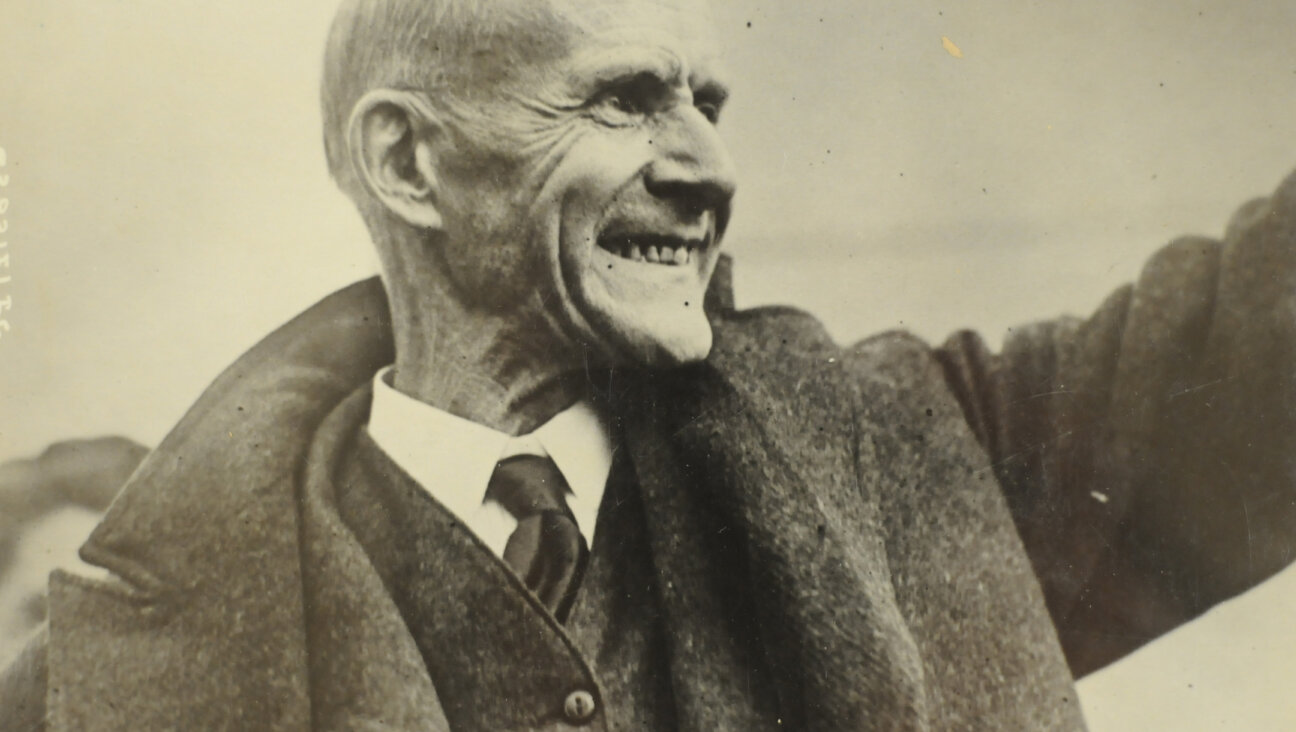Returning to Reform
Once upon a time, there was a young man, a third-generation American who was raised in a classical Reform temple, who in the Reform manner celebrated becoming a bar mitzvah and who was confirmed in the Reform rite. He was inspired by his temple’s rabbi to himself become a Reform rabbi. He held national office in the National Federation of Temple Youth, and he was admitted to the Reform movement’s Hebrew Union College.
Then, on the very day this young man was supposed to begin studies at Hebrew Union College, he instead entered the Jewish Theological Seminary of America, the intellectual citadel of Conservative Judaism. He agreed to give up the lobster dinners, the veal parmigiana and the BLT sandwiches that he had loved, and even to quit smoking on the Sabbath, as admission to JTS demanded.
The decision was not the result of a dramatic change of convictions. He simply thought he would get a better Jewish education at JTS than at HUC. To that goal everything else was secondary. Six years later, he was ordained by JTS as a Conservative rabbi.
That young man was me. I would go on to raise my children in the Conservative movement.
Today, however, I have returned to the convictions (if not to the cuisine) of my youth — not because they are expedient but because they are compelling. After a half-century of apostasy, I affirm Reform Judaism as the American Judaism both of my personal choice and of our communal necessity. Indeed, I have come to believe that if Reform Judaism did not exist today, American Jews would have to invent it.
To explain why I have returned to Reform Judaism, I’m not going to point to the studies that count Reform as the most popular stream of Judaism in the United States. That would merely echo the demographic triumphalism of Orthodox Jews who say that the future of American Judaism can be calculated from the number of baby carriages and coffins in each movement. Rather, I would suggest, Reform Judaism’s demographic preeminence can be explained by the appeal of its ideas to American Jews and their relevance to the circumstances in which we live.
Broadly speaking, I would suggest, there are two categories of Judaic religious systems in existence today: self-segregationist and integrationist.
Self-segregationist varieties of Judaism seek to isolate their adherents from outside cultural influences. They see Judaism as the only inherently valuable source of knowledge and do not emphasize science, literature or secular history in their yeshivas, only Midrash and Talmud. Self-segregationist Jews wear distinctive clothing specifically to set themselves apart from the world around them. Self-segregationist Judaisms include Orthodox groupings such as Hasidism and yeshivish or Mitnagdic Judaism.
By contrast, an integrationist Judaism is any Judaic religious system that takes as its urgent question the issue of how to be Jewish and something else. Integrationist Judaisms join the practice of Judaism with another cultural affinity. They make space for other commitments besides those of Judaism, teach their children something beyond Torah, for instance. By that definition, the various integrationist Judaisms include Reform, Conservative, Reconstructionist, Renewal and so-called Modern Orthodoxy as well.
Integrationist Judaisms respond to the aspirations of the majority of American Jews. Most American Jews want to be Jewish, but also want to be Americans, not only by citizenship but also by culture. They respond to systems of Judaic thought that explain how to be both fully Jewish and fully American.
Over the past half-century, however, the integrationist Judaisms have sometimes seemed to lose sight of their convictions. Modern Orthodoxy has been under siege from its right flank, while even Reform Judaism has chosen to re-adopt some traditional rites. The outcome of this reversion to tradition has been to effectively present the integrationist Judaisms as less authentically Jewish than Orthodoxy. Rather than settle for a second-rate traditional Judaism, some among the younger generations have opted for the real thing and “returned” — via the baal teshuva movement — to Orthodoxy.
The sorry state of Conservative Judaism — once the giant of American Judaisms — proves this point. Conservative Judaism has increasingly lost the minority of its members who privilege above all else the Judaic component of its message. That group has chosen the Orthodox or even the Haredi option. Meanwhile, many more have left for the Reform movement or joined the ranks of the unaffiliated. The center has not held and will not hold.
Reform Judaism, however, has intrinsic strengths that should enable it to resist the self-defeating tendency toward reversionism. From the very beginning, Reform Judaism has presented itself as the Judaism defined by the American condition.
More recently, Reform Jews have allowed their denomination to be painted as an inferior brand of Judaism — a set of compromises of convenience. Reform Judaism needs to stop apologizing for itself. Instead, it must revert to the clarity and courage — if not to the details — of the Pittsburgh Platform and reassert in the face of contempt the right and duty of Reform. (“Reform,” as Leonard Fein noted a generation ago, is properly understood as a verb and not a noun.)
Reform Judaism has made it into the front rank of contemporary Judaisms, so it must be saying something that is true to the experience of its vast constituency. Specify what that is and build on it. I would suggest that a platform for a 21st-century Reform Judaism should have three essential planks.
The first plank would be to reaffirm the tradition of reason and criticism that has characterized Reform Judaism from its inception. Reform Judaism founded modern learning in Judaism. Its Scripture was not dictated word for word by a supernatural being from outer space. Its theology does not promise pie in the sky when you die. The power of Reform Judaism from its 19th-century origins has been its courage to say it stands for the Judaism of today.
The second plank would be to expand the realm of the secular that Reform Judaism defined as legitimate. Reform Judaism accords to Halacha a voice but not a veto. That is the first step in the formulation of a realm of secular culture of Jewishness. Reform Judaism should advance modes of Jewish cultural expression in secular media such as literature, poetry, art, music and drama.
The third plank is to affirm the tradition of individualism that Reform Judaism has fostered, to validate the individual conscience that Reform recognized. I was brought up to affirm what I found personally meaningful and to dismiss as irrelevant what did not fit.
These three commitments of Reform Judaism — reason and criticism, the secular dimension of the culture and the autonomy of the individual — secure the freedom of modern Jews. And they amount to a Judaism that has profound support in our tradition.
I find a basis for the ideals of Reform Judaism in the Torah’s conception of who and what we are as human beings — portrayed by Scripture as “in our image, after our likeness,” or “like God,” which Rashi glosses as “creators of worlds.” The way we create worlds of meaning and truth is by exercising our power of rational thought and our autonomy of judgment, our capacity to think for ourselves and our non-negotiable capacity to be free. These represent what the reformation of Judaism brings about in the contemporary setting of this ancient and enduring tradition and explain why, if there were no Reform Judaism, we should have to create it today. Happily, we don’t have to.
Rabbi Jacob Neusner is the Distinguished Service Professor of the History and Theology of Judaism and a senior fellow of the Institute of Advanced Theology at Bard College. This essay is adapted from an address that he will be delivering December 1 at Hebrew Union College-Jewish Institute of Religion in New York for the 2009 Dr. Fritz Bamberger Memorial Lecture.

















